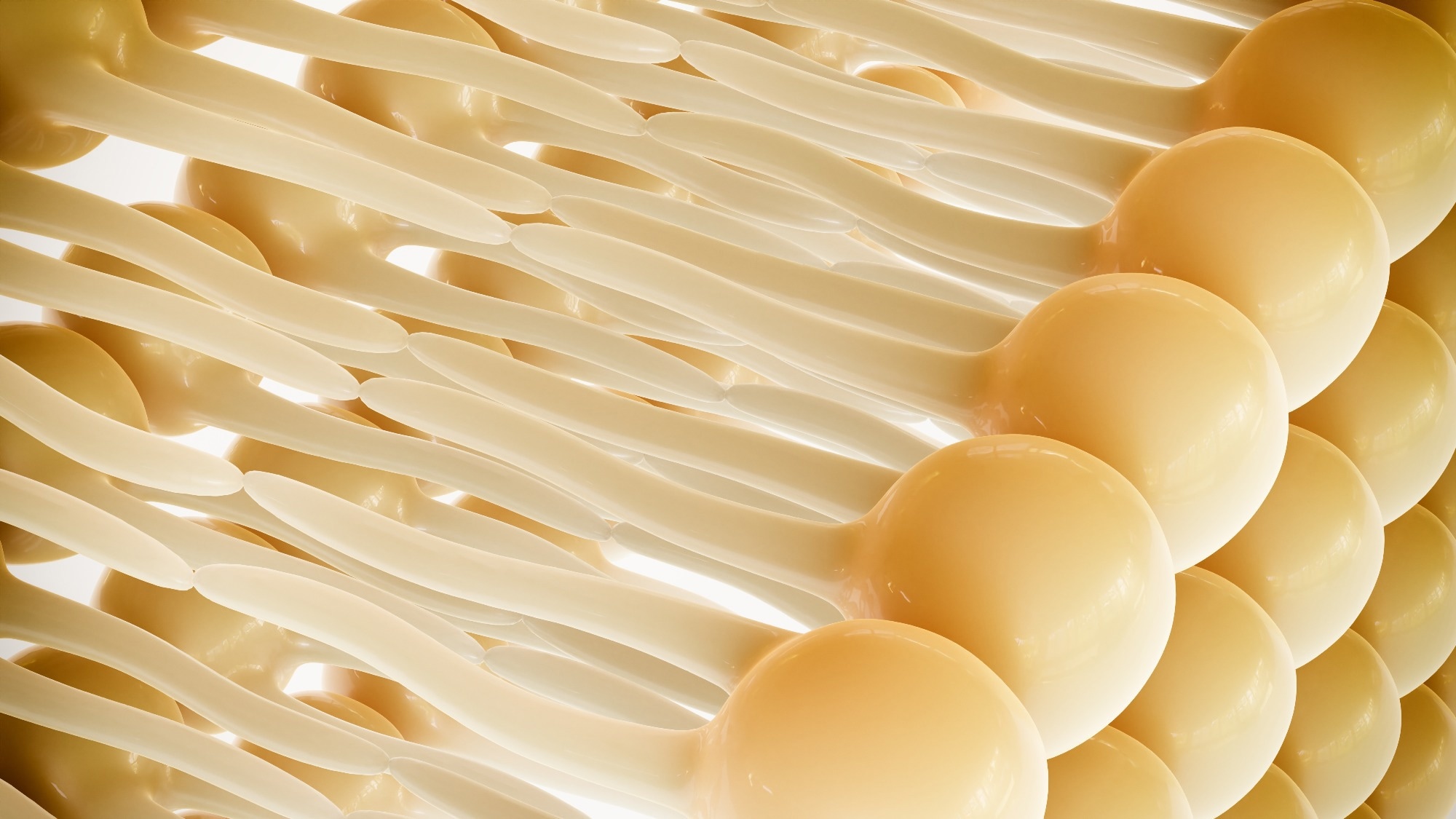In a recent study published in the journal Cell, researchers identify lipidomes as four cluster of differentiation 1 (CD1) antigen-presenting molecules and, as a result, reveal a map of self-lipid display.
 Study: CD1 lipidomes reveal lipid-binding motifs and size-based antigen-display mechanisms. Image Credit: Crevis / Shutterstock.com
Study: CD1 lipidomes reveal lipid-binding motifs and size-based antigen-display mechanisms. Image Credit: Crevis / Shutterstock.com
T-cell responses
Understanding T-cell response is informed by the interaction of its receptor (TCR) with peptide antigens bound to major histocompatibility complex (MHC)-encoded proteins. The capture of lipids by CD1 is another system for presenting antigens to T-cells. Human cells express a soluble lipid transfer protein (CD1e) and transmembrane antigen-presenting isoforms of CD1a to CD1d.
These isoforms fold and form narrow portals that lead to internal hydrophobic clefts binding the alkyl chains of lipids. High throughput detection of lipids bound to CD1 isoforms may distinguish whether the isoforms capture the same or different lipids, whether they are specific lipid receptors, or instead broadly survey the cellular lipidome.
Study findings
In the present study, researchers described a lipidomics platform to detect, enumerate, and define lipids, forming CD1-lipid complexes in cells. Two sets of CD1 isoforms and MHC class I controls were generated. Five unlinked proteins contained leucine-zippered or native β2-microglobulin (β2m), whereas five linked proteins had a peptide linker for β2m.
Lipidomes were generated by eluting ligands by Folch extraction after affinity purification. Alignment of eluents from isoforms yielded 1,668 and 1,773 CD1-associated features in the two datasets. A list of unique features was obtained after censoring multimers, isotopes, peak splitting errors, alternative adducts, and ions that were not increased relative to controls.
Between 404-580, unique CD1 ligands were captured per isoform, which resulted in 1,841 and 2,256 unique CD1-lipid pairs in the two datasets. Chemical identification of molecules bound to multiple isoforms was required to determine the molecular determinants of isoform-specific ligand capture.
The linked lipidome reported 46 phosphatidylcholines (PCs), 25 ether-PCs (EPCs), 15 phosphatidylethanolamines (PEs), 10 ether-PEs (EPEs), two ceramides, three lyso-PEs (LPEs), four lyso-PCs (LPCs), five triacylglycerols, 12 diacylglycerols, four hexosylceramides, three deoxyceramides, 18 sphingomyelins (SMs), and five dihexosylceramides. A total of 177 named lipids from the unlinked lipidome were separately identified.
Principal component analysis (PCA) revealed clustering of lipid intensity patterns, thereby suggesting the presence of isoform-specific capture motifs. Moreover, differential abundance analysis provided capture patterns by isoform, chain length, lipid anchor type, head groups, and unsaturation. Lipids with similar structures had similar CD1 isoform specificity patterns.
Long-chain, intermediate-chain, and shortest PCs skewed to CD1d, CD1a, and CD1b, respectively. However, CD1c had equivalent capture of PCs of all lengths found in cells.
Lipidomes for total lipids from the two cell types were generated, with their signals aligned with eluents from CD1 isoforms by cell type. Numerous matching signals were detected between cellular lipids and CD1 eluents, thus suggesting that self-lipids were presented in unmodified forms, unlike chemically processed peptides for T-cells.
Data indicated that cells actively influence which lipids to be displayed. Further, the team analyzed the solved structures of CD1 isoforms. The volume estimate for CD1b was unchanged but revised for other isoforms.
The number of CH2 units inside CD1 clefts. CD1a bound an average of C16.7 for single-tailed ligands or C38.3 for two-tailed ligands. The ligand size of other isoforms was significantly variable.
Measurements of the average cleft volume and lipid anchor size showed emergent size motifs. Anchors in eluted lipids matched the cleft volumes for CD1a and CD1d. Ligands for CD1c were more variable and longer.
For CD1b, ligand length and cleft volume were mismatched. The disparity between cleft volume and ligands suggested that CD1b may bind two small ligands. The high-resolution structure of CD1b with endogenous lipids (CD1b-endo) showed that a C40 ligand occupied the upper cleft, and another C16 ligand of linear density was positioned below it.
CDb1 was resolved with lysosulfatide, C34 PE, and C34 SM, with all structures exhibiting distinct densities. Dual-chain antigens SM and PE occupied the upper chamber in the A’ and C’ pockets, whereas the single-chain lysosulfatide occupied the A’ pocket. In all cases, lipids occupied the upper portion of the cleft, whereas lipids of linear densities were at the bottom. The smaller linear density ligands were likely endogenous scaffold lipids.
CD1b, antigen, and scaffold exhibited 1:1:1 stoichiometry. Densities showed two defined positions representing the upper and lower chambers). The two densities of CD1b had a length of C56 to C65, in line with the CD1b cleft volume capacity estimated at C65. Thus, small exogenous ligands can displace the endogenous lipid in the upper chamber, whereas a large antigen may require the ejection of both ligands in the CD1b cleft.
Conclusions
The partially overlapping lipidomes of CD1 isoforms revealed at least 1,300 unique lipids. Unlike peptide processing for T-cells, lipids were presented in unmodified forms, thereby suggesting that the CD1 system solves size issues through seating mechanisms and altered stoichiometry. Each isoform had a distinct pattern of over-capturing lipids. Three capture mechanisms were proposed depending on whether clefts match, mismatch, or partially match lipid anchor size.
Journal reference:
- Huang S, Shahine A, Cheng TY, et al. (2023). CD1 lipidomes reveal lipid-binding motifs and size-based antigen-display mechanisms. Cell. doi:10.1016/j.cell.2023.08.022